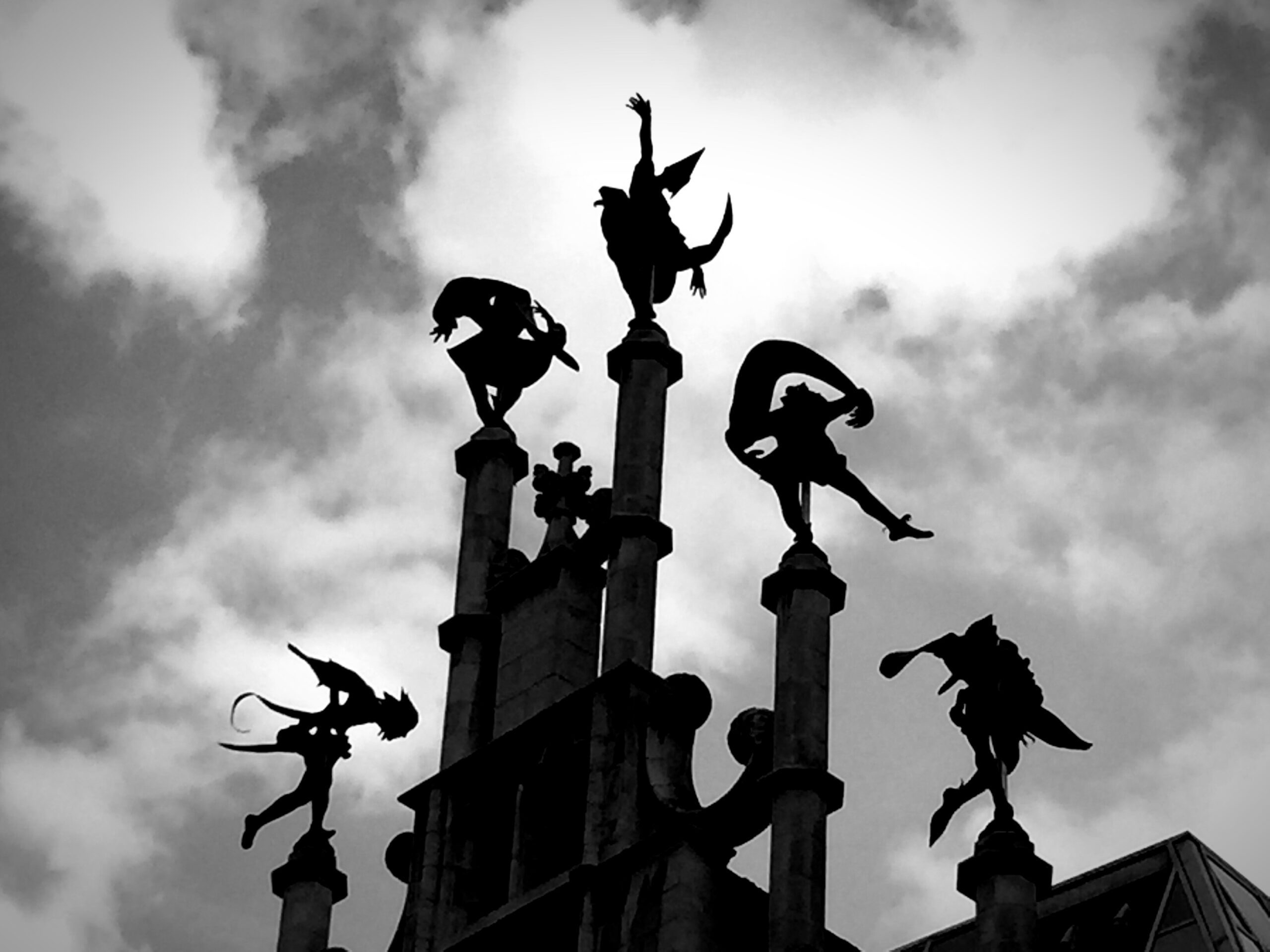
Katherine’s Symbolic Representations: We might first ask the obvious question: why is Katherine called a Pelican? It would seem be because she is representing in this dream as someone with a large, scaley beak. We soon recognize that this explanation is not adequate—for pelicans are not the only animals with large scaley beaks. Furthermore, their beak looks quite different from other beaks and is not the prominent feature when viewing the Pelican. Its beak is accompanied by a large throat pouch. And neither it’s beak nor its throat pouch is particularly scaley. Perhaps we need to go deeper into the reason why Katherine is called “The Pelican.”
We might find that the portrait of a pelican is to be found in Katherine’s childhood books or in the rhymes that she learned as a child. The pelican not only has a large (and perhaps ugly) throat pouch, this water fowl uses this pouch to store the fish that it catches. It can store a large quantity of fish – much more than other birds that catch fish. This means that the pelican is capable of devouring a large number of fish that have been stored in its pouch.
There is even a somewhat irreverent (“naughty”) rhythm about the Pelican that most people have heard sometimes during their childhood. It comes in two versions and mentions the Pelican’s beak and capacity to store a large amount of food:
A wonderful bird is the pelican, His bill will hold more than his belican, He can take in his beak Enough food for a week But I’m damned if I see how the helican!
Another version: A funny old bird is a pelican. His beak can hold more than his belican. Food for a week He can hold in his beak, But I don’t know how the helican.
Given the visual representation of the Pelican with the large throat pouch (this is actually only one type of Pelican) and given the accompanying rhythm, the young Katherine might have considered the pelican to be symbolic of Gluttony and (more generally) Greed–given that its pouch can hold more than his belly can (actually consume and digest). Does Katherine worry about being a Glutton—given that her weight may be part of her struggles with a distorted, negative self-image (she is in fact a bit slim)? Is her competitive spirit in playing a game of Bridge evidence of Greed (her “need” to always win)? We might find that Katherine has symbolized the Pelican (as Gluttony and Greed) and internalized this symbol—so that she can insert it in her dream so that it can “scare the hell out her.” The Pelican shouldn’t do that to Katherine. The Pelican responds: the “hellican!” We can push further: is Katherine being punished for her Gluttony and Greed by being given an ugly beak and eventually being rolled off the end of a bridge to her death? These are indeed symbolic representations that are very personal for and privately held by Katherine.
Level Three: Focal Conflict
When moving to the identification of focal conflict in a dream, it is appropriate to look for the emotions—especially as invested in a particular person or event in the dream. Psychoanalysts speak of this as the process of Cathexis (French and Fromm, 1964, p. 45). A specific object, idea or person is invested with mental and emotional energy – often a combination of thoughts and feelings. Stated somewhat differently, our role as explorer of the focal conflict requires that we travel to a deeper and more emotional domain. We are also moving in most cases to an earlier time in our life and to more primitive (and usually more vivid) imagery.
Perhaps of greatest importance is the source of the emotions that are generated. These emotions are often based on “unreal” threats (and hopes). These are the “bogie men” who resided beneath our beds when we were young, as well as the brave warriors and lovely princesses we will be when we “grow up.” We know that we are coming close to the focal conflict when “regression” (to an earlier time in our life or to a more primitive state of cognitive processing) is fully in force.






